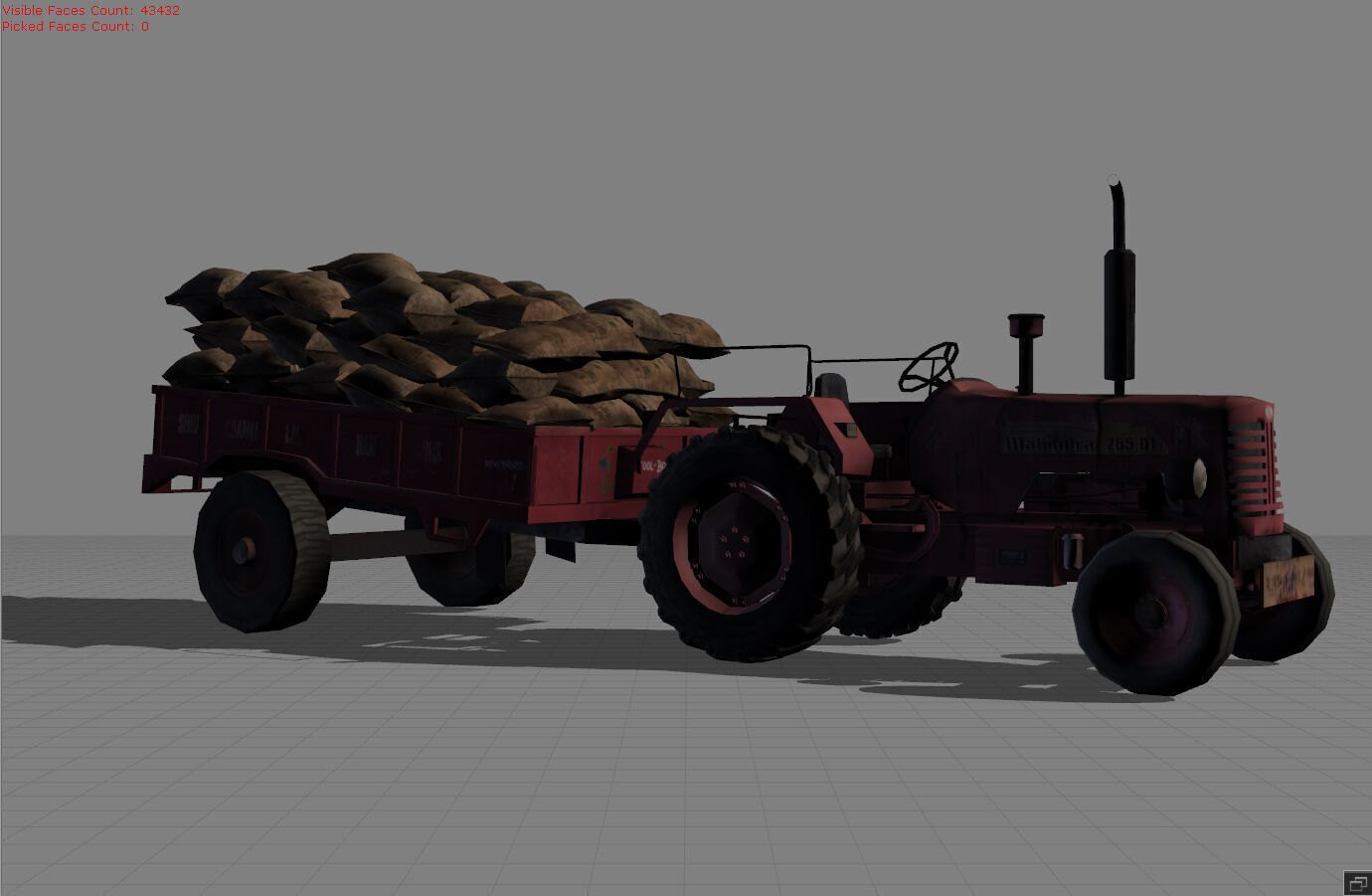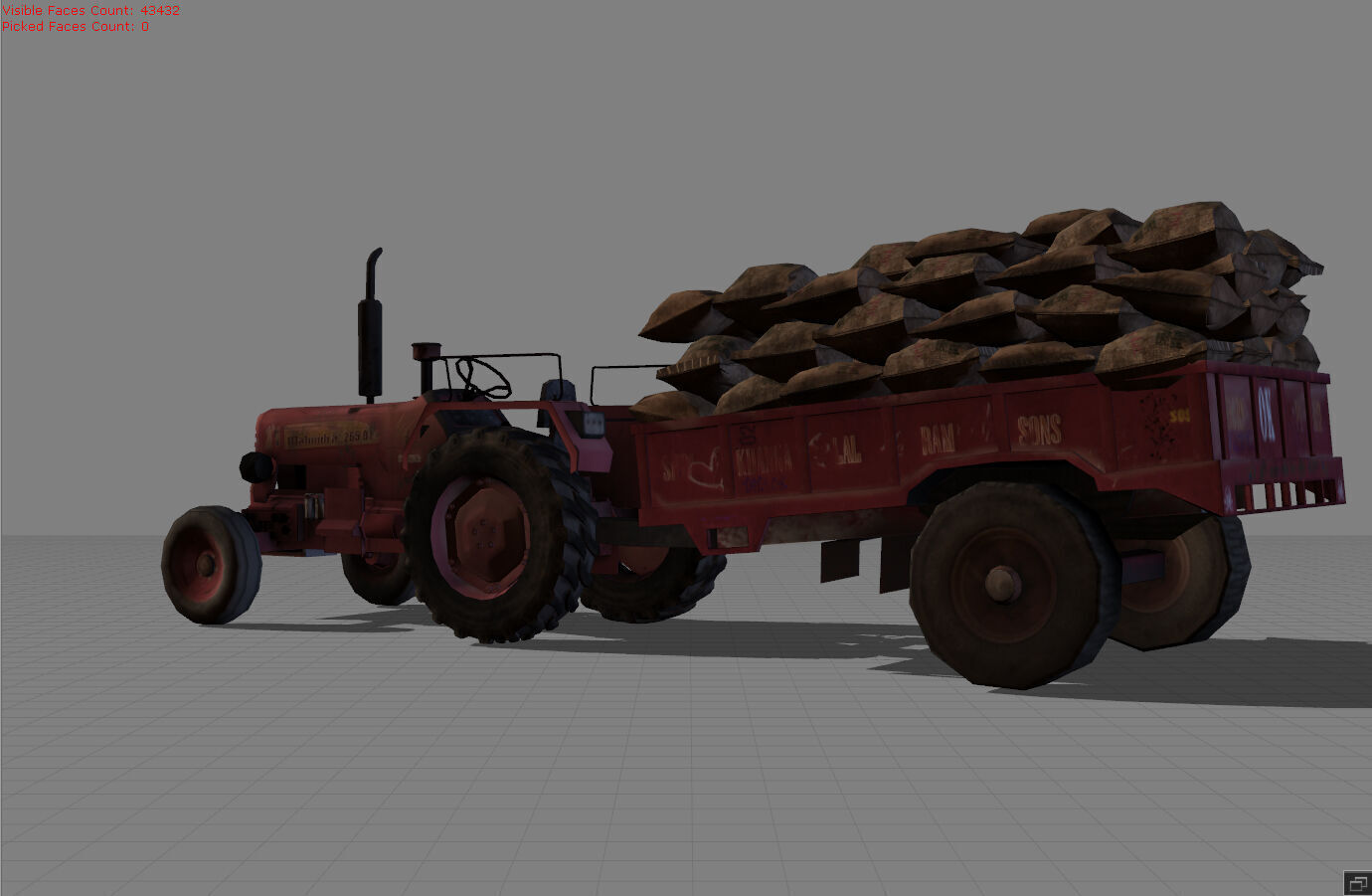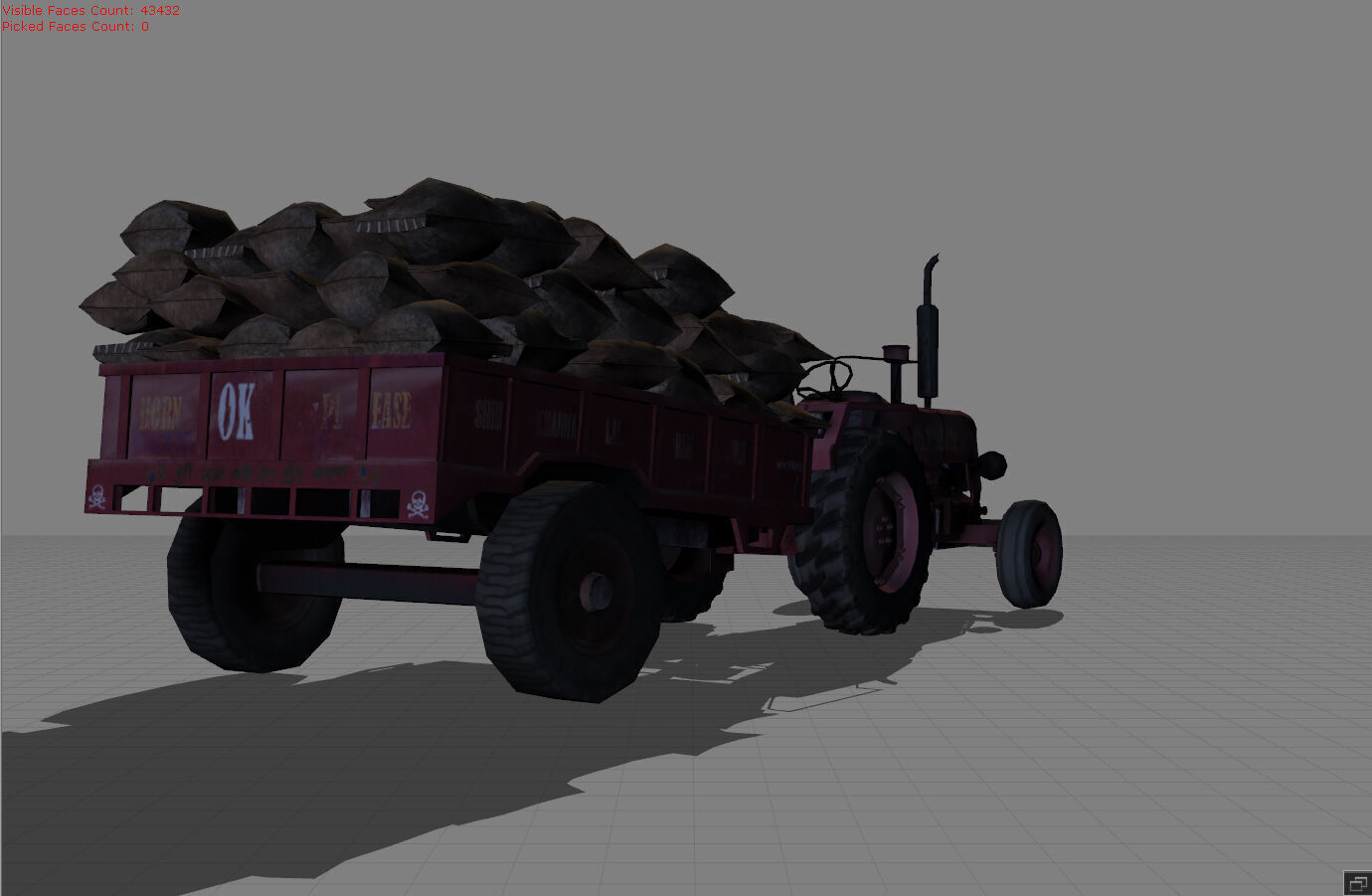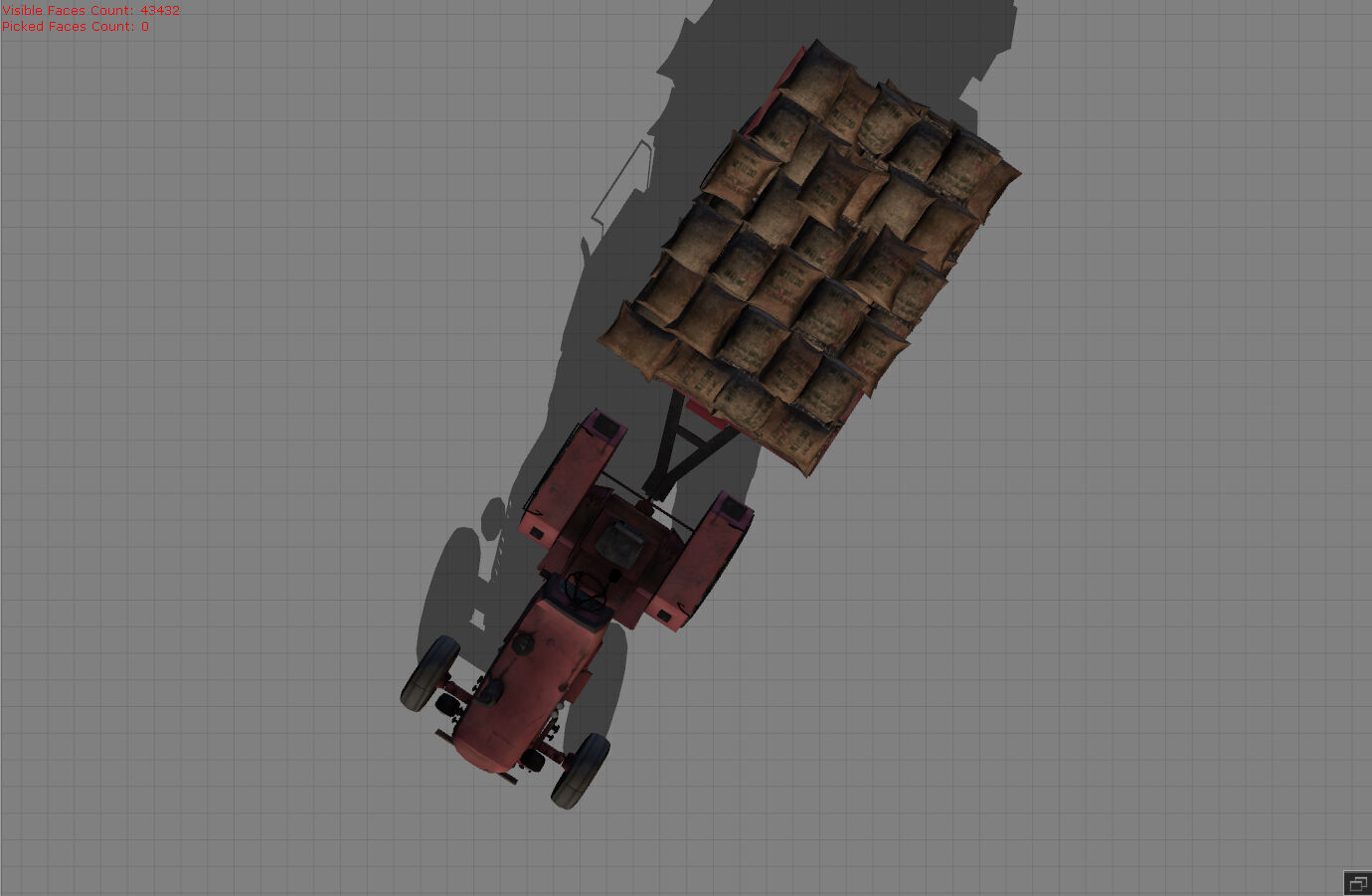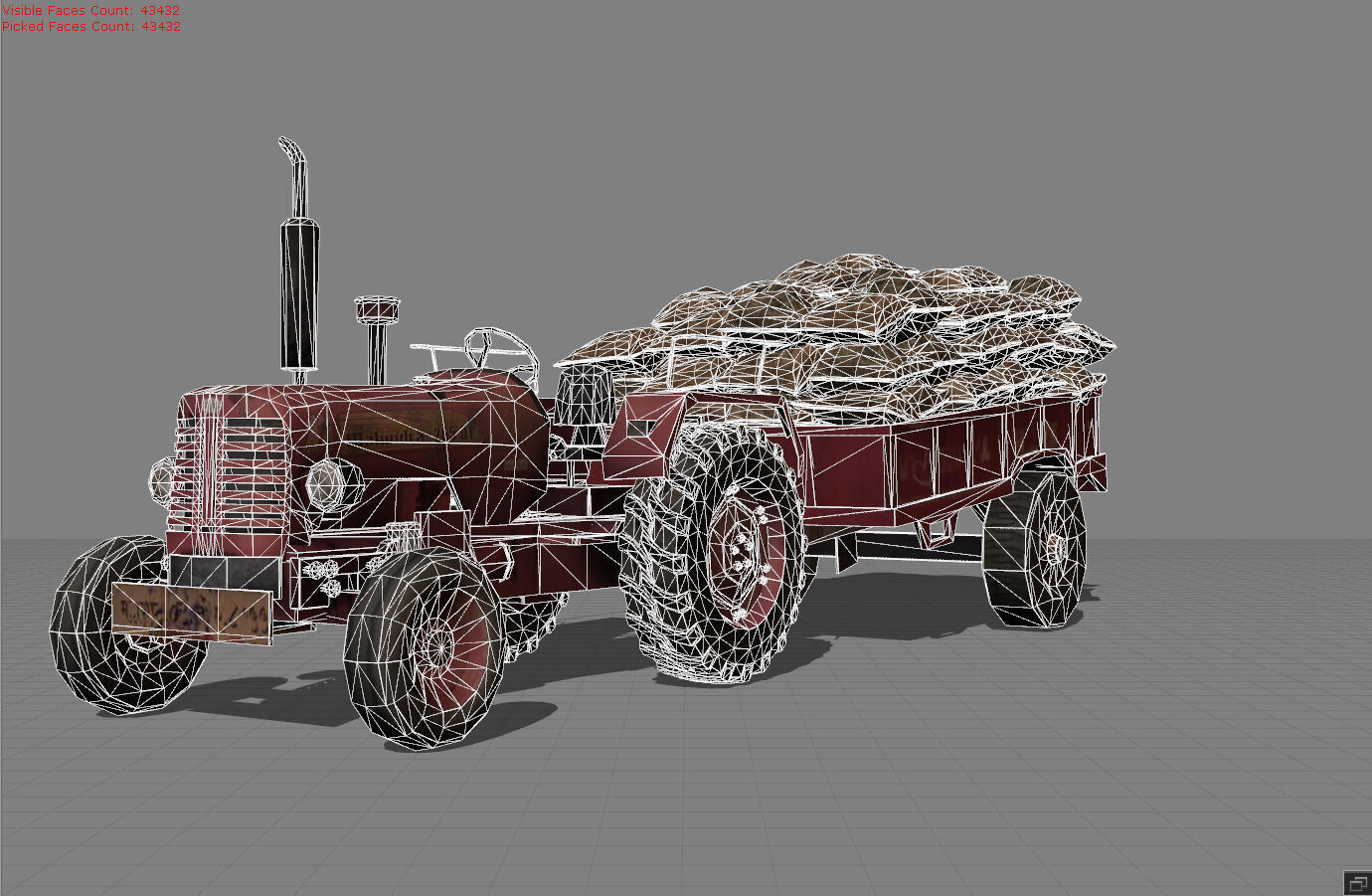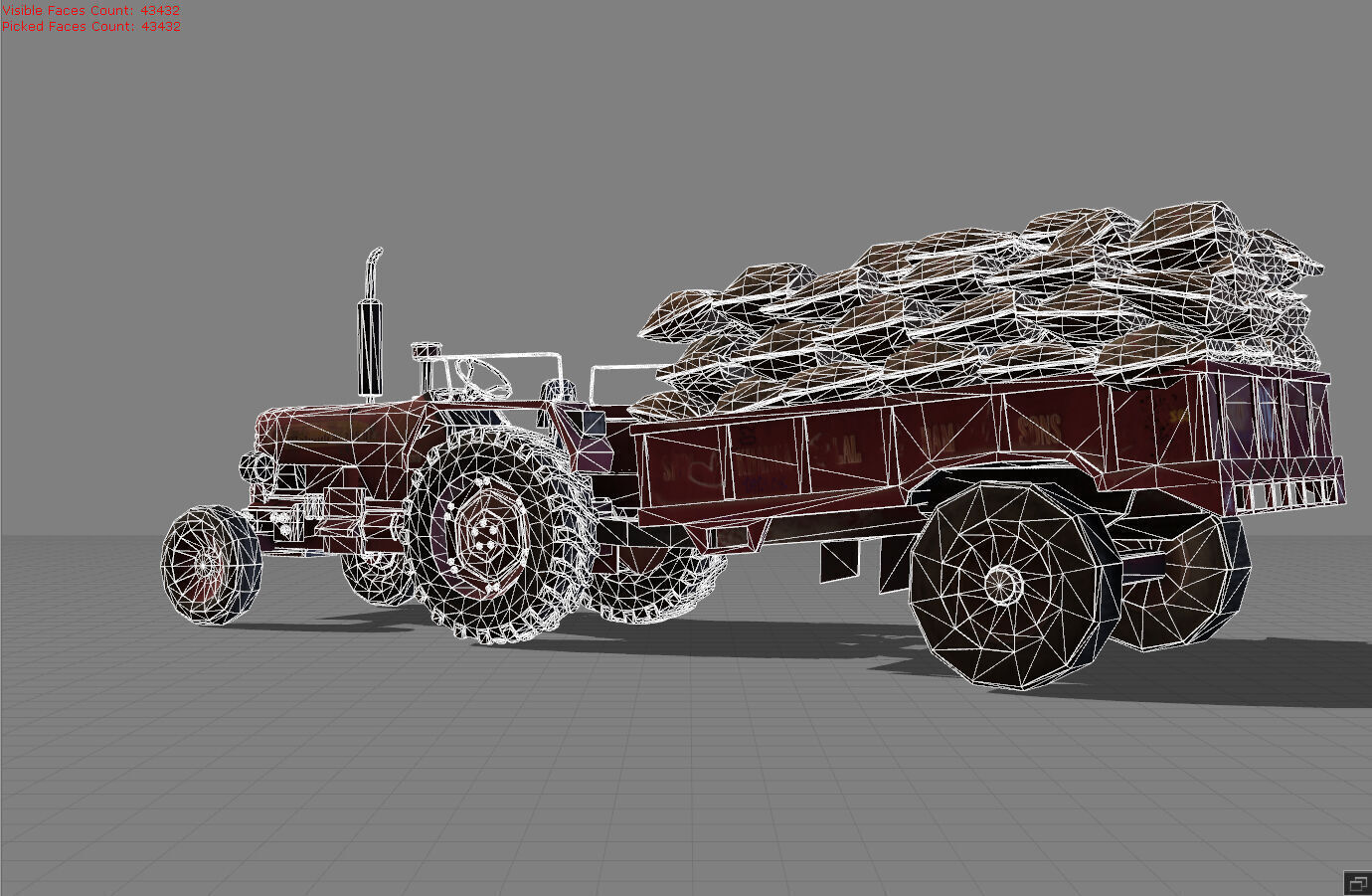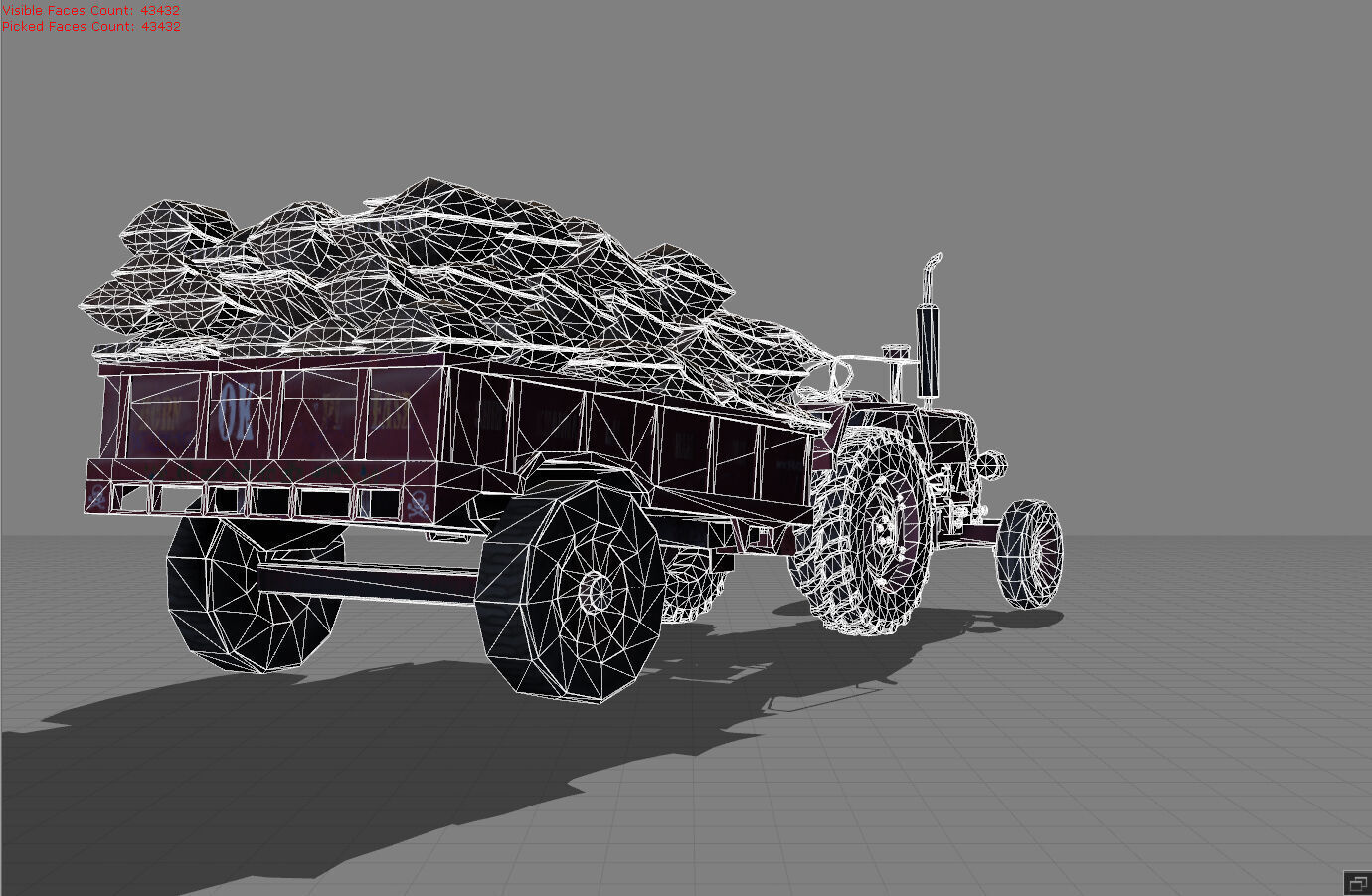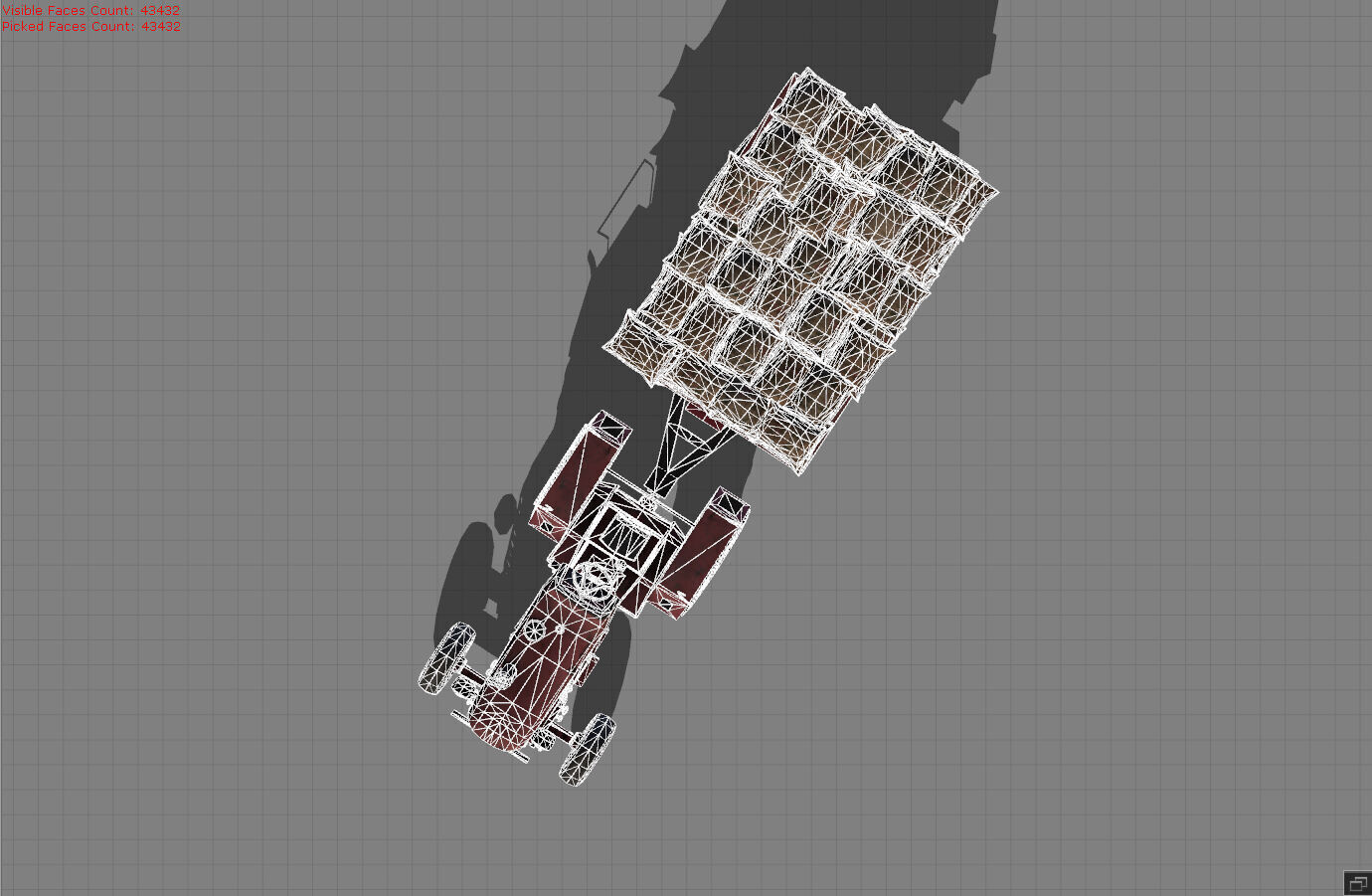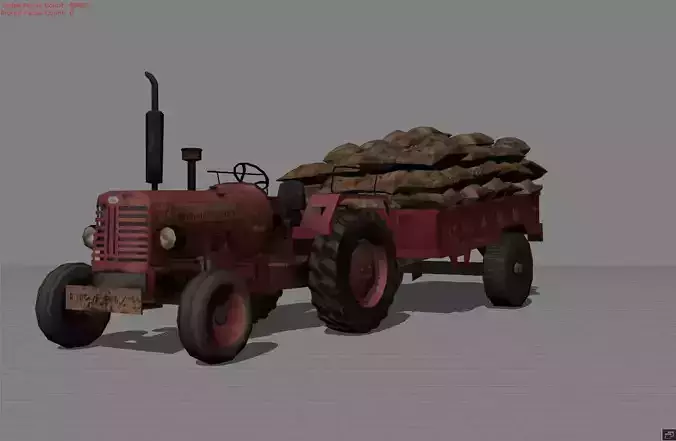
Tractor with bag Low-poly 3D model
World War IThe first artillery tractors were designed prior to the outbreak of World War I, often based on agricultural machines such as the Holt tractor. Such vehicles allowed the tactical use of heavier guns to supplement the light horse drawn field guns. Horseless artillery available prior to World War I weighed 8 tons, had 70 horsepower and could go 8 mph.[1] For example, in the British Army it allowed the heavy guns of the Royal Garrison Artillery to be used flexibly on the battlefield.
World War II
German RSO artillery tractor towing 105 mm howitzer, Albania, 1943In World War II the draft horse was still the most common source of motive power in many armies. [citation needed] Most nations were economically and industrially unable to fully motorise their forces. One compromise was to produce general purpose vehicles which could be used in the troop transport, logistics and prime mover roles, with heavy artillery tractors to move the heaviest guns.
The British Army had fully mechanized prior to war. During the 1920s and 30s it had used the Vickers Medium Dragon and Light Dragon fully-tracked artillery tractors, but they had been mostly replaced with wheeled vehicles, starting with the Morris CDSW. The Royal Artillery persisted with specialist artillery tractors – known as Field Artillery Tractors (FAT) – such as the Morris Quad, Canadian Military Pattern (CMP) Quad and AEC Matador throughout World War II, rather than adopt a general purpose vehicle. Artillery tractors were different from General Service (GS) vehicles by having a compartment for the gun detachment immediately behind the cab and separated from the cargo space containing ammunition and gun stores.
German forces used half-tracks as artillery tractors, such as the Sd.Kfz. 7. Half-tracked tractors were not commonly used in this role in other nations. Compared to wheeled vehicles they had better off-road capabilities, but were slower on roads and were more prone to breakdowns. However, for Germany horses remained the most common way of towing artillery throughout the war.[citation needed]

